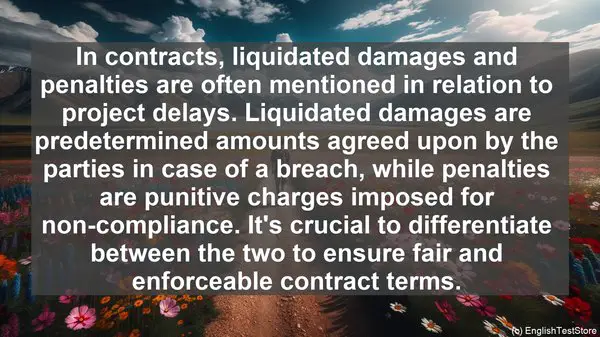Introduction
Welcome to today’s lesson on commonly confused words in construction management. As you progress in your studies or career, you’ll encounter various terms that may seem similar but have distinct meanings. Let’s explore these nuances together.
1. Bid vs. Estimate
While both terms refer to the process of calculating project costs, they differ in specificity. A bid is a formal offer to perform the work at a specific price, often submitted in response to a request for proposal. On the other hand, an estimate is a preliminary calculation that provides a general idea of the project’s cost. It’s important to use the correct term in contractual discussions to avoid misunderstandings.
2. Change Order vs. Variation Order
Change orders and variation orders are often used interchangeably, but they have distinct purposes. A change order is a written document that modifies the original contract, usually due to unforeseen circumstances or client requests. In contrast, a variation order is a change requested by the client that falls within the scope of the original contract. Understanding this difference helps maintain project clarity and avoids unnecessary disputes.

3. Punch List vs. Snag List
Towards the end of a construction project, a punch list or snag list is created. While both terms refer to a list of items that require attention or correction, their usage varies geographically. In North America, it’s commonly referred to as a punch list, whereas in the UK and Australia, it’s called a snag list. Being aware of these regional variations is essential, especially when collaborating with international teams.
4. RFI vs. RFC
RFI and RFC are acronyms that stand for Request for Information and Request for Clarification, respectively. While they both seek additional details or clarification on project aspects, an RFI is typically used during the design or planning phase, while an RFC is more common during the construction phase. Using the appropriate term ensures that the recipient understands the urgency and context of the request.
5. Liquidated Damages vs. Penalty
In contracts, liquidated damages and penalties are often mentioned in relation to project delays. Liquidated damages are predetermined amounts agreed upon by the parties in case of a breach, while penalties are punitive charges imposed for non-compliance. It’s crucial to differentiate between the two to ensure fair and enforceable contract terms.
6. As-Built vs. Record Drawings
As-built drawings and record drawings serve similar purposes, but they are created at different stages of a project. As-built drawings are updated during construction to reflect any changes made, while record drawings are prepared at the project’s completion. These drawings are vital for future reference, maintenance, and renovations, and using the correct term avoids confusion when accessing project documentation.
7. Retainage vs. Retention
Retainage and retention are terms used in relation to payment in the construction industry. Retainage refers to the portion of payment withheld until the project’s completion, while retention is the actual amount withheld. Understanding this distinction is crucial for accurate financial tracking and budgeting.
8. Subcontractor vs. Supplier
While subcontractors and suppliers both play vital roles in a construction project, their responsibilities differ. A subcontractor is typically hired to perform specific tasks or trades, while a supplier provides materials or equipment. Clearly defining these roles in contracts and communications ensures smooth project execution.

9. Warranty vs. Guarantee
Warranty and guarantee are terms often associated with product quality. In construction, a warranty is a promise made by the contractor or manufacturer regarding the product’s performance or workmanship for a specific period. A guarantee, on the other hand, is a commitment to rectify any defects or issues within that period. Being aware of these distinctions helps manage client expectations and ensures timely issue resolution.
10. Constructability vs. Feasibility
While both terms relate to a project’s viability, they focus on different aspects. Constructability refers to how easily and efficiently a design can be built, considering factors like materials, methods, and site conditions. Feasibility, on the other hand, assesses the overall viability of a project, considering factors like cost, market demand, and regulatory requirements. Understanding these differences aids in early-stage decision-making and risk assessment.
